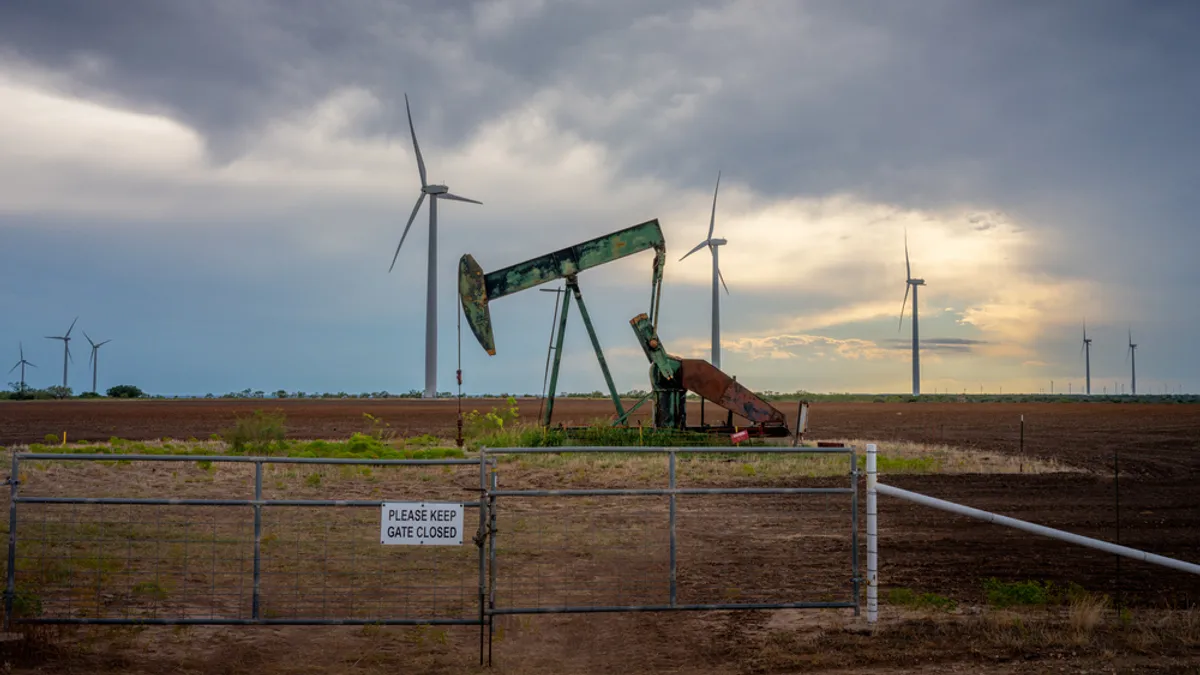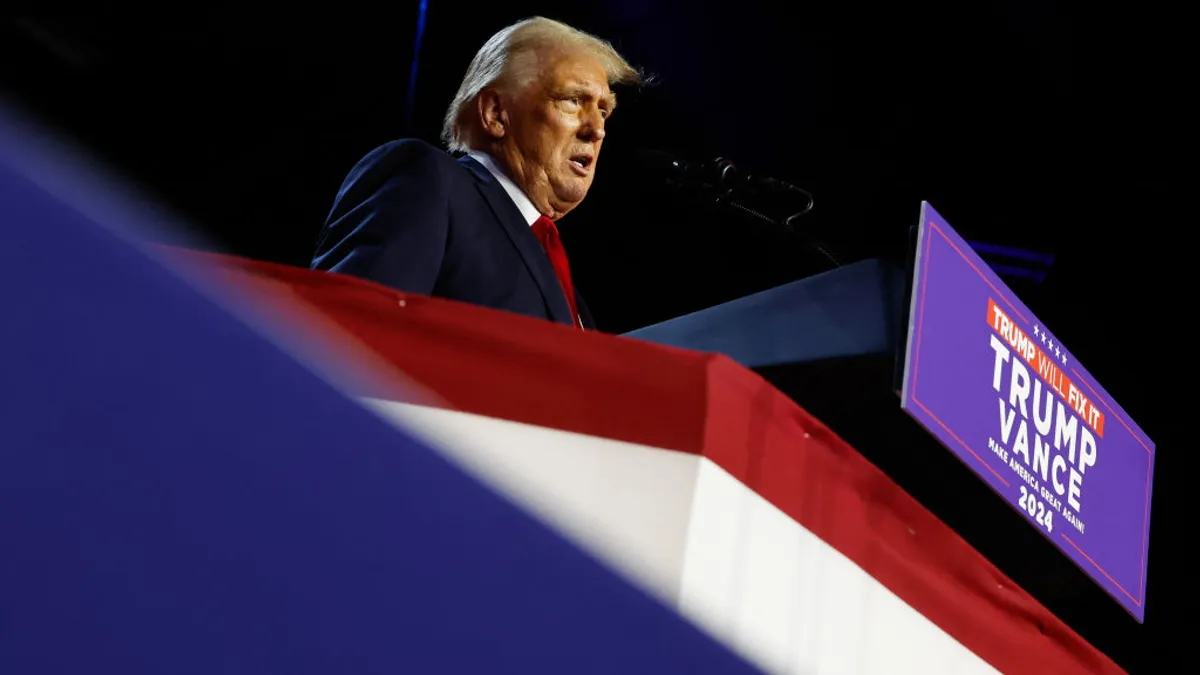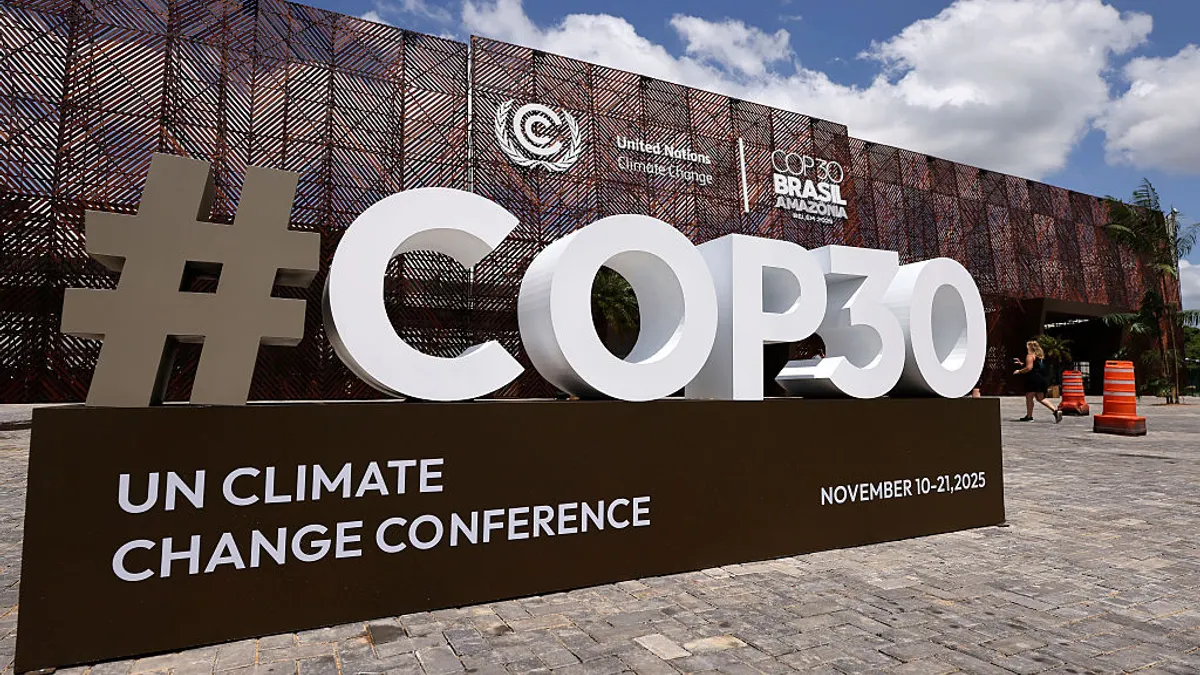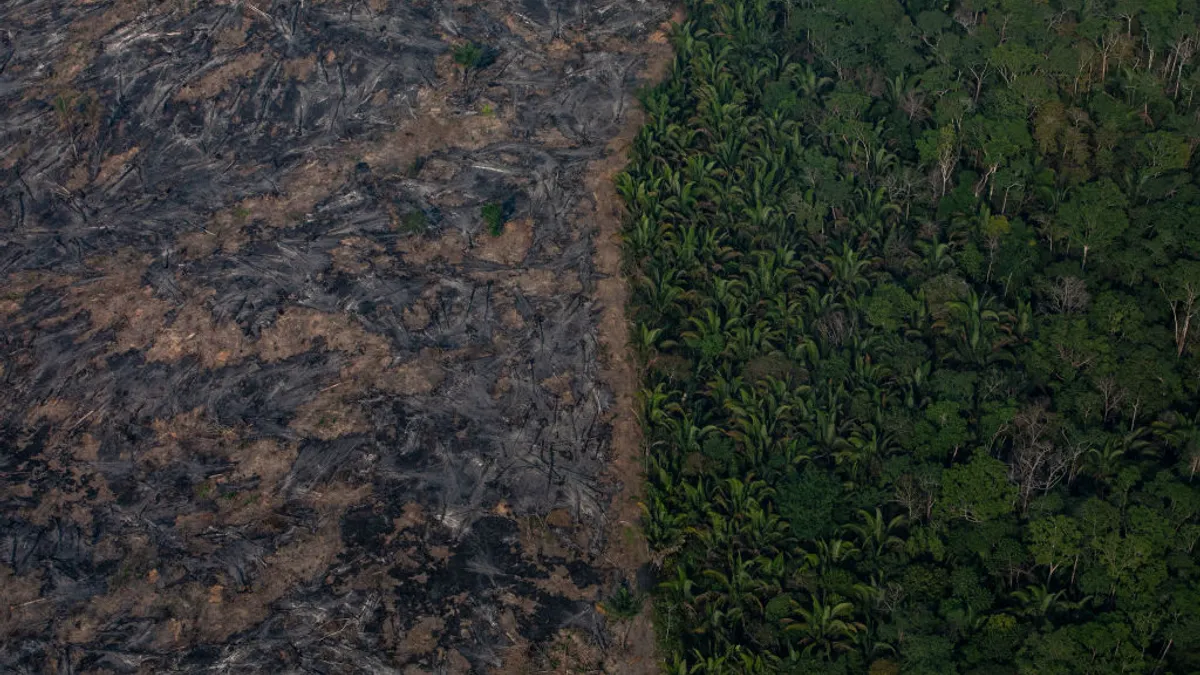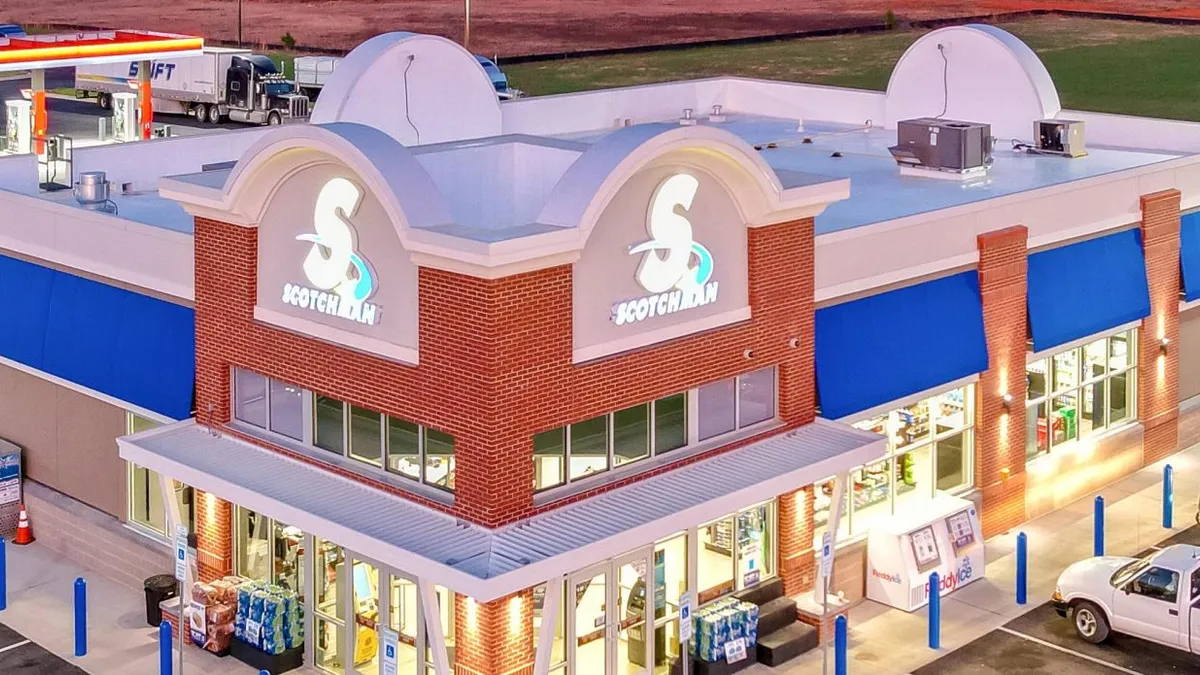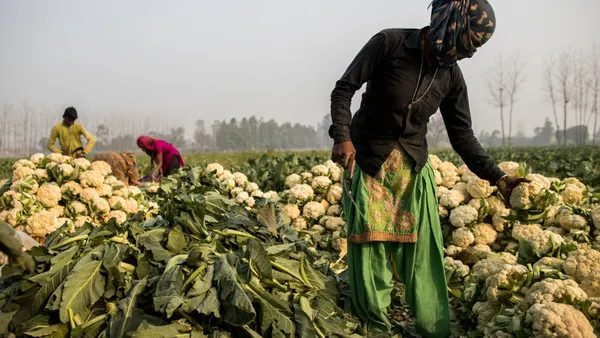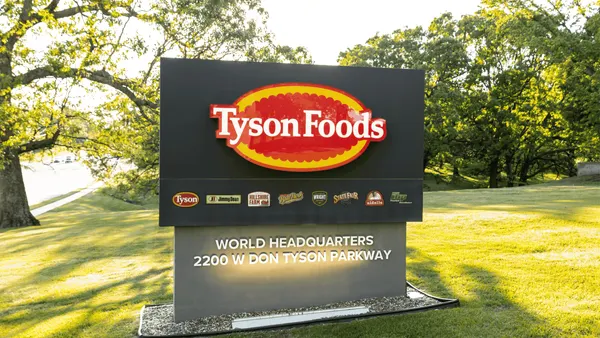India-based carbon removal company Varaha was founded in 2022 and has since become the largest carbon project developer in Asia. In 2025 alone, the company has been a part of some of the largest deals on record for biochar removals, and most recently, for soil carbon removals.
Varaha focuses on removal pathways centered around engagement with smallholder farmers — or farms on less than 10 hectare plots — and farmers are given an income percentage for the credits produced, Varaha CEO Madhur Jain told ESG Dive.
The carbon removal company counts tech giant Google and sustainable investment firm Mirova as clients and signed major deals with both this year. Since its launch, Varaha has issued carbon credits generated by biochar removal and enhanced rock weathering projects, which Jain said in an interview earlier this month made Varaha the first company in Asia and the third company globally to issue carbon credits from “two distinct pathways.”
Editor’s note: This interview has been edited for length and clarity.
ESG DIVE: Tell me about Varaha, all the way from its founding and growth since then.
MADHUR JAIN: We believe that our experience and the huge amount of agriculture which happens in India, Bangladesh, Bhutan — which are some of the countries that we work in — can actually enable carbon removal, and the carbon market can support the incentivization of these practices on the ground.
Factors which have contributed to Varaha, in such a short period of time, becoming one of the leaders [in the space] is, one, the team. Of around 165 people that we have in total, 36% of them come with a professional or academic agricultural background. We know how to work with smallholder farms, because we've done that for a long period of time. The second factor was that India itself provides a very large opportunity, because India has 130 million farmers, 400 million acres of land and is the largest producer of rice, wheat, cotton and several other crops. So, huge land holdings on the agriculture side, which is one of the key ingredients. And if you specifically talk about biochar, the key ingredient for biochar is biomass.
India produces half a billion [metric] tons of biomass annually from agriculture. India produces so much biomass that 200 million metric tons is actually wasted by either burning on the farm or decomposing openly. It becomes a challenge for farmers to take care of it, so a lot of it is just burnt.
What Varaha does is we buy the biomass from the farmers at value, which means that they make money from that waste. We make biochar out of it, which is a high carbon, condensed carbon product, and we sell it to the farmers for free as a bio fertilizer. Then we use carbon credits as the mechanism to sustain the entire operation.
You are able to tackle multiple problems. One is crop residue burning, which is a huge health hazard. Secondly, you pay farmers for the residue. They make more money. You remove carbon, and then you put this biochar back into the soil, which increases farmers’ income and productivity and reduces the use of chemical fertilizers. So, we are able to orchestrate and create so much value in the ecosystem.
Is Varaha’s focus on farmers a function of your expertise or an outcome of the location you’re based in?
You build a business based on whether there is a way to create value someone is willing to pay for. Right now, my view is that even though technology has progressed quite a bit on agri-food genetics, etc., the majority of the food will still continue to be grown in the open fields. I don't see food being grown for an 8 billion person population in a lab. It is going to be majorly in the farm. Now, close to one-third of that food comes from countries with large populations of smallholder farmers, which feed themselves but also export to others. India exports to more than 50 countries, for example.
All of these ecosystems, however, are being affected by changing temperatures, climate, erratic rainfalls, etc. And hence, if you are able to come up with interventions in these countries which actually allows for adaptation while solving for mitigation and climate change at the same time, that's a lot of value in the structures you are building for food security, farmer survival, and making sure there is enough food globally.
We found carbon markets to be one major source of interest, because there are companies who have net-zero targets willing to buy carbon credits. So, if we are able to create enough value across carbon, climate mitigation, climate adaptation, livelihoods, food security — all of these angles — and sustainability, there is a lot of value that can be created, and a lot of that can be passed on to smallholders farms.
Farmers get a significant part of the carbon credit income in these regenerative agriculture projects, so that they have an incentive to put and do agriculture in a certain way which allows for carbon removal.
So, I think it's a mix of all of these things. India and smallholder farmers definitely is a big draw. Availability of talent in India in general is the second one. There is huge agricultural expertise in the nation. But I think why [some of the largest] international funds, tech companies are willing to work with someone like us is that a lot of that talent reflects very well in a diversified fashion in our company.
How did you get in contact with Google for the biochar deal?
It's a good question as to how a company in India was able to get to Google in Seattle and convince them to buy a credit so far away. I think for them, the ingredients were our team and their experience. Secondly, we were already one of the largest players [in Asia] when we signed this deal. We were 12th or 13th at that point in time, but still quite high on the leaderboard.
Interestingly, we were the only company in India back then, and even today, to have issued carbon credits from biochar. So, just a proven track record of having issued credits through these industrial plants. And also the digital MRV, the tracking system of where the biomass coming from, how much biochar was actually produced, and then what was the end use of the biochar and the co-benefits of the farmers, the value they derive out of it. These were the ingredients which were really essential for Google to build trust and sign something massive.
At the time, the Google deals were the largest biochar removals, but there have since been larger ones. What does that signify?
This signals that these are some of the solutions which are proven now from a carbon removal standpoint, that biochar can be measured realistically how much carbon is removed, and the issuance cycles are also much faster.
It basically just showcases that the technology is maturing, and it's not just the offtakes.
Earlier, it was more of credit buyers just buying more and more credits to be delivered, but the credit supply was taken because it's a supply-constrained market. It takes time to create these industrial plants, then find biomass, get capital, produce, go through the audit process, third-party audit, third-party validation and issuance.
But now, all of a sudden, credit issuances have also started. It still lags the demand, but there is much more success in the market that these credits actually can be created and transferred. So, that is what is leading to more and more trust.
How have you seen the carbon removal market, both globally and regionally, grow since you all started three and a half years ago?
When we started the company, most of the market was carbon reduction, like renewables, but our view was that the market will shift towards carbon removals. That was the hypothesis we had, that this is the direction we see the market growing in, and that is what has happened.
It has exploded. The biochar [market] was probably less than around $50 million when we started the company; now, it's more than 10x of that annually. Enhanced rock weathering didn't even exist in terms of sales at all. Now, recently, there have been deals which are $200 million in size. Regenerative agriculture and agroforestry have seen similar trends.
Carbon removal has really taken off like anything. There was a report which was published [by the International Energy Agency in 2021] which stated that, not just carbon reduction, but also the removal of historical carbon is essential to get to net zero. And that is when all of the companies which have the capability to invest capital started to go into carbon removal deeply.
India is emerging as a major hub [for carbon removals]. There have been several deals and announcements from India in the last 18 months or so. My view is that in the next 18 to 24 months, India may emerge as the one of the largest markets for carbon removal supply, and in the next five years, I would be very surprised if it is not the largest.




